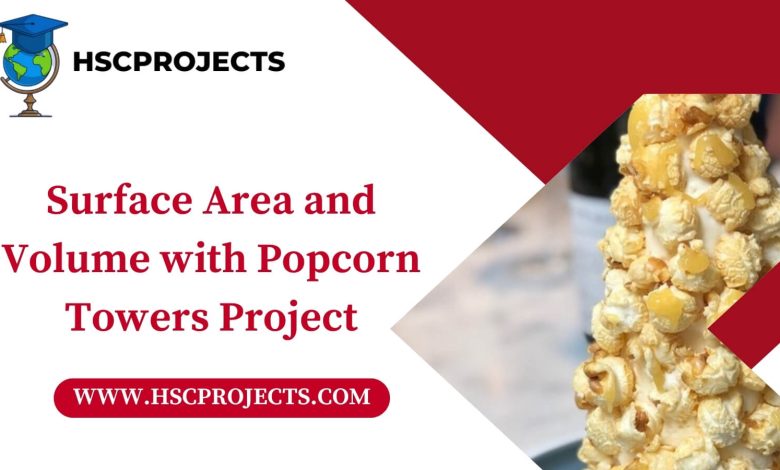
Surface Area and Volume with Popcorn Towers Project
Introduction to the Experiment
The Popcorn Towers activity is an engaging way to explore key concepts in math and science, particularly surface area and volume. This experiment is especially relevant to the field of nanotechnology, demonstrating how these concepts play a vital role in various scientific areas.

Objective
The aim is to understand and calculate the surface area of cylinders and grasp the concept of volume, using everyday materials like paper and popcorn.

Materials Required
- 8.5” x 11” paper sheets
- Popped popcorn
- Dry measuring cups
- Scissors, tape, pencil, ruler
- Calculator
Activity Overview
Participants will create four different popcorn towers by folding and shaping paper. The process involves calculating the surface area of each tower and exploring how their shapes affect their volume.
Step-by-Step Procedure
- Preparing the Towers: Fold and cut the paper into two sets of rectangles – one set long and thin (T1, T2) and the other short and wide (W1, W2). Roll these into cylindrical towers of varying dimensions.
- Calculating Area: Measure and calculate the area of each paper piece before forming it into towers.
- Building and Measuring Towers: Construct towers by rolling and taping the paper. Trace their bases onto a sheet of paper and measure the diameters to calculate the area of the top and bottom circles.
- Surface Area Calculation: Combine the area of the sides with that of the top and bottom circles to determine the total surface area of each tower.
- Exploring Volume: Estimate the volume of each tower by measuring how much popcorn each can hold. This helps in understanding the concept of volume and its relationship with the shape of the container.
Observations and Analysis
- Document the surface area calculations and the volume of popcorn each tower holds.
- Analyze how the shape and dimensions of the towers influence their volume capacity.
Conclusion
This experiment highlights the importance of surface area and volume in scientific studies, particularly in nanoscience. It shows that as objects shrink to the nano-scale, their surface area-to-volume ratios change, leading to new chemical properties and reaction capabilities.
References
- Math is Fun! – Math Definitions
- Stenmark, J., Coates, G. (1986). “Family Math”. Berkeley, CA: Lawrence.
In order to download the PDF, You must follow on Youtube. Once done, Click on Submit
Follow On YoutubeSubscribed? Click on Confirm
Download Surface Area and Volume with Popcorn Towers Project PDF






